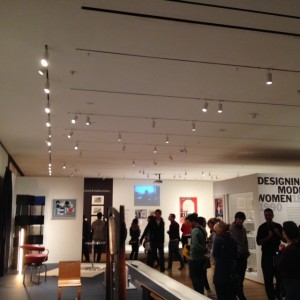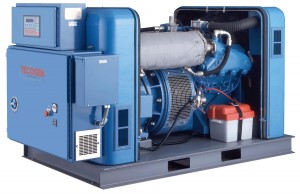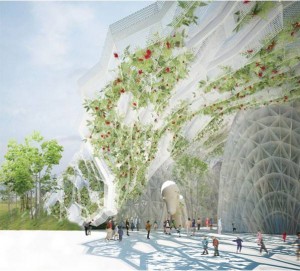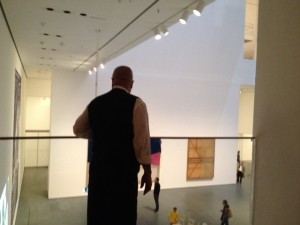Lighting
Upon walking into the lobby of the museum, one would easily assume that the ample  sunlight from the window walls may provide sufficient lighting to the museum interior. However the majority of lighting energy consumed does not come from the areas, but rather the surrounding galleries where sunlight does not reach.
sunlight from the window walls may provide sufficient lighting to the museum interior. However the majority of lighting energy consumed does not come from the areas, but rather the surrounding galleries where sunlight does not reach.
Lighting is one of the biggest sources of energy consumption in the art museum. However even though monthly electricity bills can boast up to $270,000 each month, the institution has been slow to conduct lighting retrofits for a number of reasons.
According to Vasquez, one of the largest concerns of LED lighting has been throw distance, which is how far light can reach from it’s source. Although LEDs produce more intense light for less energy, many models do not have the spotlight effect that make gives the artwork optimum color and experience.
In the galleries, there are only two types of lightbulbs, with warming and cooling filters attached based on aesthetic recommendations from each gallery’s curator.
However, lighting retrofits for museums can also be realized by other ways. For instance, many museums include back offices, storage areas, and corridors that do not need the color-sensitive lighting required by displaying artworks.
On-Site Energy Generation
Currently, the museum has been considering the possibility of installing a long-term energy solution with an on-site cogeneration facility.

CoGeneration Turbine.
Source: http://www.tecogen.com/Collateral/Images/English-US/products/CogenPortrait.jpg
The primary motivation behind this is to wean the museum off its dependence on ConEd steam, which is required to heat the building. Not only is this steam expensive, but is also corrosive to the building’s pipe infrastructure due to lack of filtration of corrosive oxygen in the steam. Furthermore since Hurricane Sandy, New York City has set priorities for steam delivery in case of emergency, acknowledging that there may be future occurances when steam is not available to everybody.
The possible closure of Indian Point nuclear energy plant in Upstate New York, which currently provides nearly 40% of New York City’s energy, is also a strong motivation for the museum to adopt alternative energy sources.
John explains that if Indian Point closes, all electricity consumers in New York would likely have to pay higher prices for energy or seek alternative resources.
“Instead of being a victim, we can be a winner”, John says of the utilization of local generation.
Inspired by a Capstone Microturbines, which operate like jet engines, Vasquez hopes that the future on-site generation at the museum will take advantage of generated heat for other uses instead of for lift. Several of these uses include using thermal byproduct to heat up domestic hot water in the building, both for restroom use, kitchen use, and with HVAC systems.
Environmental Responsibility
When asked what was the most fulfilling part of his job, John took a moment of pause, then with a calm smile described his ritual morning ritual of arriving to work. “I come in every day at 7AM to make sure everything is running smoothly and we’re ready to open”, he says. “Sometimes I stand in front of works such as a Monet or Matisse before there is anyone in the museum”, he says, “and feel a sense of responsibility”.
“Energy for us is a double-edge source. We are finding ways to save energy but not at the expense of environmental conditions for the art”.



